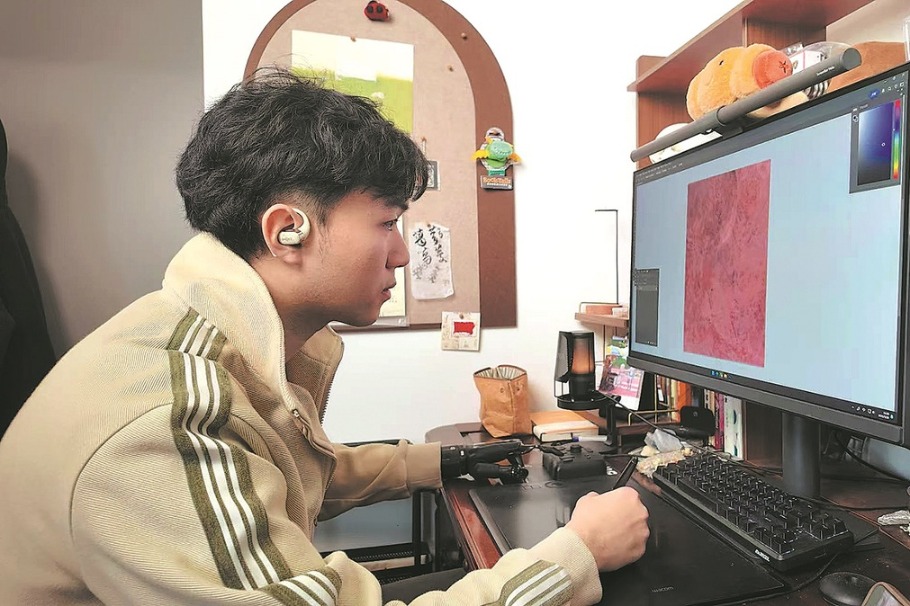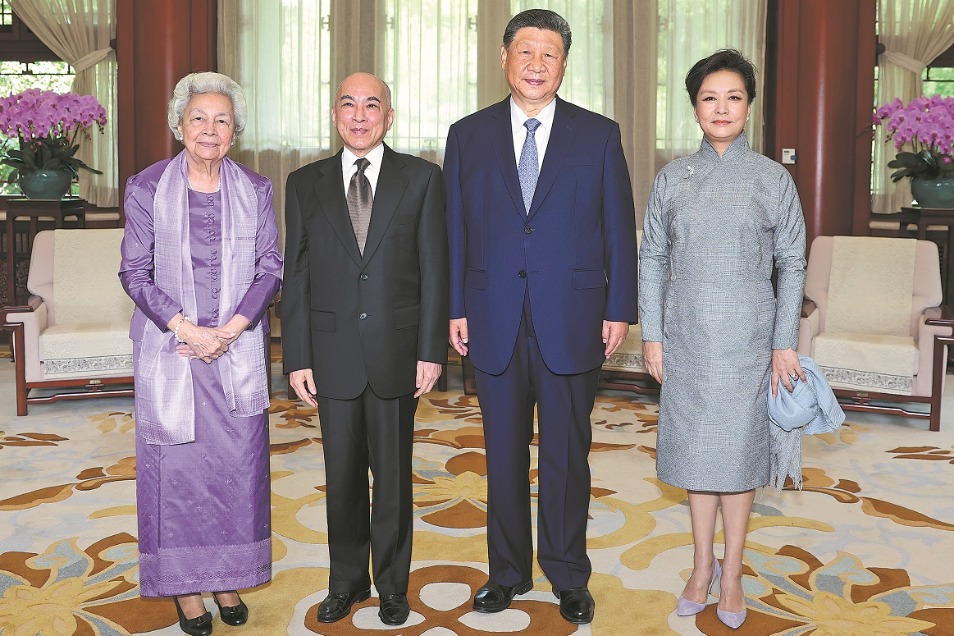Xiplomacy: How Belt and Road cooperation paves way for shared global development


BEIJING -- It was a landmark moment for Peru's mega port of Chancay when a drawbridge unloaded a container from the COSCO "Peru" ship and loaded another onto the "New Shanghai" cargo vessel under the glow of brightly lit terminals on a mid-November night.
Minutes earlier, Chinese President Xi Jinping, on a state visit to the South American country, attended the inauguration ceremony via video link alongside Peruvian President Dina Boluarte. Together, they inaugurated the Chancay port, a flagship project of Belt and Road cooperation between China and Peru.
The inauguration symbolizes the transformative impact of the Belt and Road Initiative (BRI), first proposed by Xi in 2013. Over the past decade, the initiative has delivered a slew of practical projects worldwide, bringing tangible benefits to millions of people.
MAKING REAL DIFFERENCE
Addressing the fourth symposium on Belt and Road construction work in Beijing on Monday, Xi stressed comprehensively advancing high-quality cooperation under the BRI. Since the initiative was put forth in 2013, major achievements have been made in Belt and Road cooperation, which contributed to enhancing China's friendship with participating countries and promoting their economic and social development, he said.
The just-launched Chancay Port is such an example. This state-of-the-art, green and smart port, built with Chinese investment and expertise, reduces sea freight time from South America to Asia by half, from 45 days to 23.
Omar Alayo, a Peruvian engineer for the construction of the Chancay Tunnel, watched the port's inauguration ceremony. He said the flow of goods and technology along this new maritime route will shape history.
The launch of the port followed the successes of other BRI projects, including the Laos-China Railway. Operational since 2021, the railway has transformed Laos into a key land-linked nation, boosting foreign investment and reducing poverty among its predominantly agrarian population.
"With the railway, the mountain from Kunming to Vientiane is no longer high, and the road no longer long." Sommad Pholsena, vice-president of the Lao National Assembly, still remembered Xi's words when addressing the railway's inauguration three years ago.
The railway has created new investment opportunities in agriculture and industry, and alleviated poverty for many Lao people, Sommad Pholsena said.
Similarly, the China-Europe freight train network has revitalized trade hubs from Chongqing, China, to Duisburg, Germany, driving industrial development and regional economic growth.
The China-Europe freight train service has so far operated 100,000 trains, with over 11 million TEUs of goods valued at more than $420 billion transported.
Volker Tschapke, honorary president of Germany's Prussian Society, noted that the initiative fosters regional growth by integrating logistics with trade, creating opportunities that improve livelihoods across nations.
The BRI has improved infrastructure and connectivity, created tens of thousands of jobs, and helped countries realize their shared vision of peaceful development, win-win cooperation, and common prosperity, said Thong Mengdavid, a lecturer at the Institute for International Studies and Public Policy of the Royal University of Phnom Penh.

GROWING PARTNERSHIPS
The BRI is witnessing growing partnerships around the world. So far, more than 150 countries and over 30 international organizations have signed Belt and Road cooperation agreements, with the initiative extending from the Eurasian continent to Africa and Latin America.
Last month, Xi and Brazilian President Luiz Inacio Lula da Silva jointly announced the alignment of the BRI with Brazil's development strategies.
"We have high expectations for the strategic alignment between our two countries, and believe it will further unleash Brazil's economic vitality," said Chief of Staff of the Brazilian Presidency Rui Costa. He also pointed out that Brazil's development strategies are highly compatible with the BRI.
When addressing a symposium marking the fifth anniversary of the BRI in 2018, Xi said that the broad support for the BRI shows aspiration from countries involved, developing countries in particular, for peace and development. "It does not differentiate countries by ideology nor play the zero-sum game. As long as countries are willing to join, they are welcome."
Since 2013, multiple countries and regions have forged synergy between their development strategies and the BRI, including Kazakhstan's Bright Path economic policy, Mongolia's Steppe Road Program, Saudi Arabia's "Vision 2030," the construction of the Eurasian Economic Union by Russia, and the African Union's Agenda 2063.
With the alignment of these strategies with the BRI, a number of flagship projects have been completed, converging dynamics of development for the countries involved.
Take the Jakarta-Bandung High-Speed Railway, a flagship project that dovetails the BRI with Indonesia's Global Maritime Fulcrum. For the past year since the highspeed train went into operation, the program has seen comprehensive collaboration of teams from both countries in areas such as high-speed rail operation management, talent development and transfer of technologies.
"This cooperation embodies the spirit of partnership based on equality and mutual benefit," said Veronika Saraswati, director of the Saraswati Institute and a China expert. Championing the principles of consultation, cooperation, and shared benefits, the BRI supports equal participation of all countries in decision-making, regardless of size, thus promoting the democratization of international relations.
Lemmy Nyongesa Mulaku, a Kenyan expert on China-Africa relations, said China's development and cooperation models, which are in line with the development needs of African countries and have been widely welcomed, uphold the principle of non-interference in internal affairs, and have no political strings attached.

BOOSTING MODERNIZATION
During the first session of the 19th G20 Leaders' Summit held on Nov 18, Xi prioritized "pursuing high-quality Belt and Road cooperation" as the first of China's eight actions to support global development.
It has always been China's consistent proposition and the unchanging aspiration of the BRI to inject new impetus into global economic growth, create new opportunities for global development, and build new platforms for international economic cooperation.
China has launched the Initiative for Belt and Road Partnership on Green Development with over 30 participating countries, actively assisting them in strengthening talents in green development. The implementation of the Green Silk Road Envoys Program has provided training to thousands of individuals from over 100 countries. Additionally, Luban workshop has taken root in 15 countries, benefiting participating countries with China's advanced concepts of vocational education.
The BRI prizes green and sustainable development, showcasing China's commitment to environmentally friendly growth, which is essential for Global South countries to achieve sustainable modernization, said Yasiru Ranaraja, Sri Lankan international affairs expert and founding director of the Belt and Road Initiative Sri Lanka.
In areas ranging from energy, taxation and disaster reduction to anti-corruption, think tanks and media, China and its partners continue to advance the construction of multilateral cooperation platforms. Meanwhile, blossoming cultural exchanges, such as the Liangzhu Forum and the Alliance for Cultural Heritage in Asia, have deepened people's understanding of the Silk Road spirit.
Belt and Road cooperation focuses on Global South countries, and has become a link connecting nations and promoting the modernization process of the Global South, said Luis Antonio Paulino, director of the Confucius Institute at Sao Paulo State University.
Looking to the future, the BRI will continue to respond to the earnest aspirations of developing countries for growth and prosperity, and advance toward the goal of building a modernized world of peaceful development, mutually beneficial cooperation and shared prosperity.
Just as Xi once said, "the Belt and Road cooperation was proposed by China, but its benefits and opportunities are for the world to share."
























